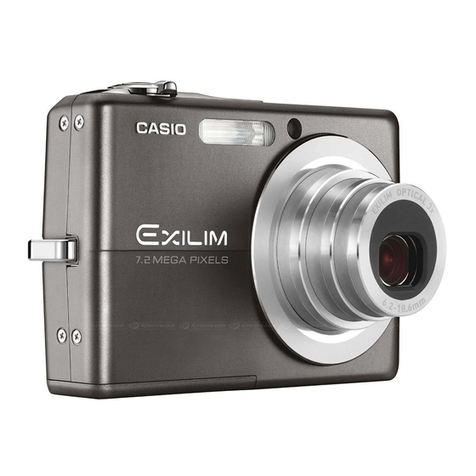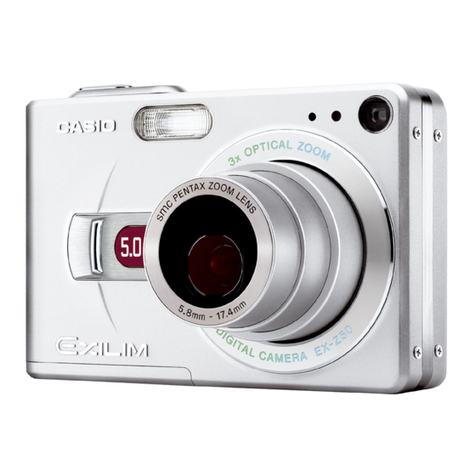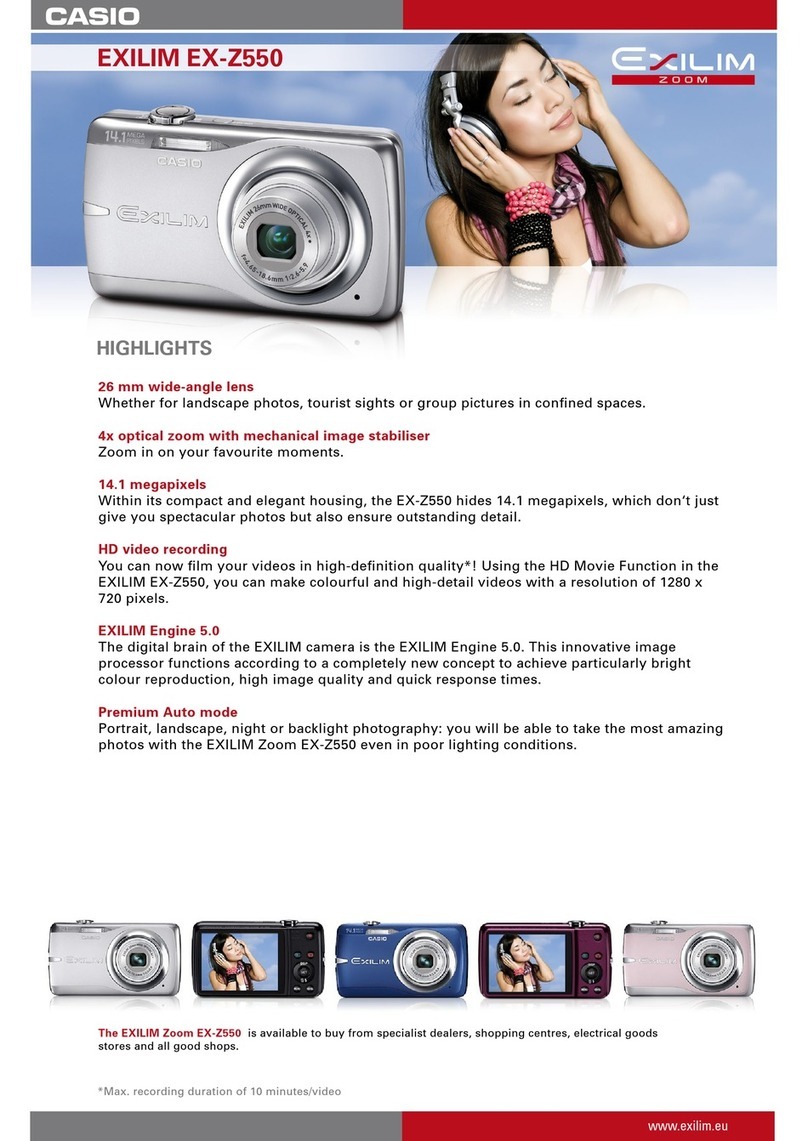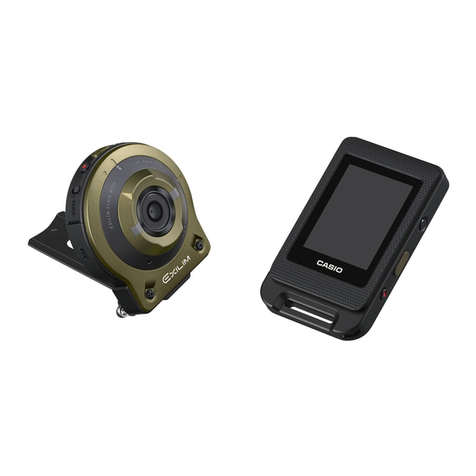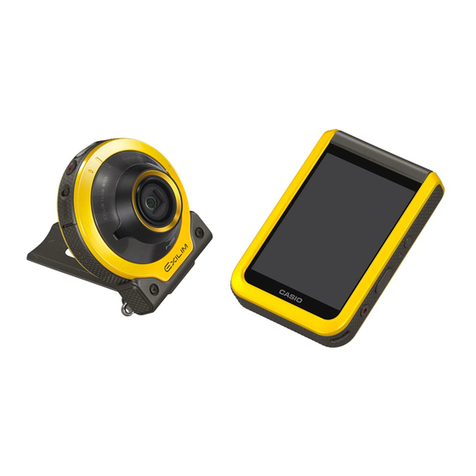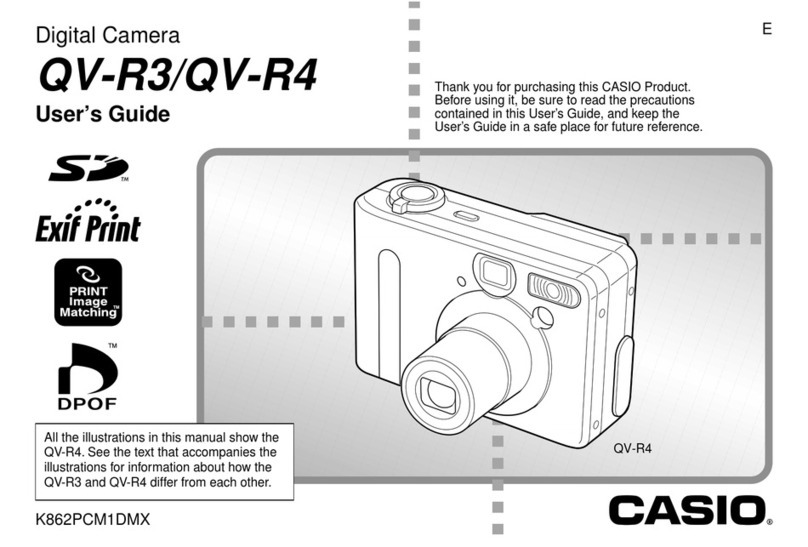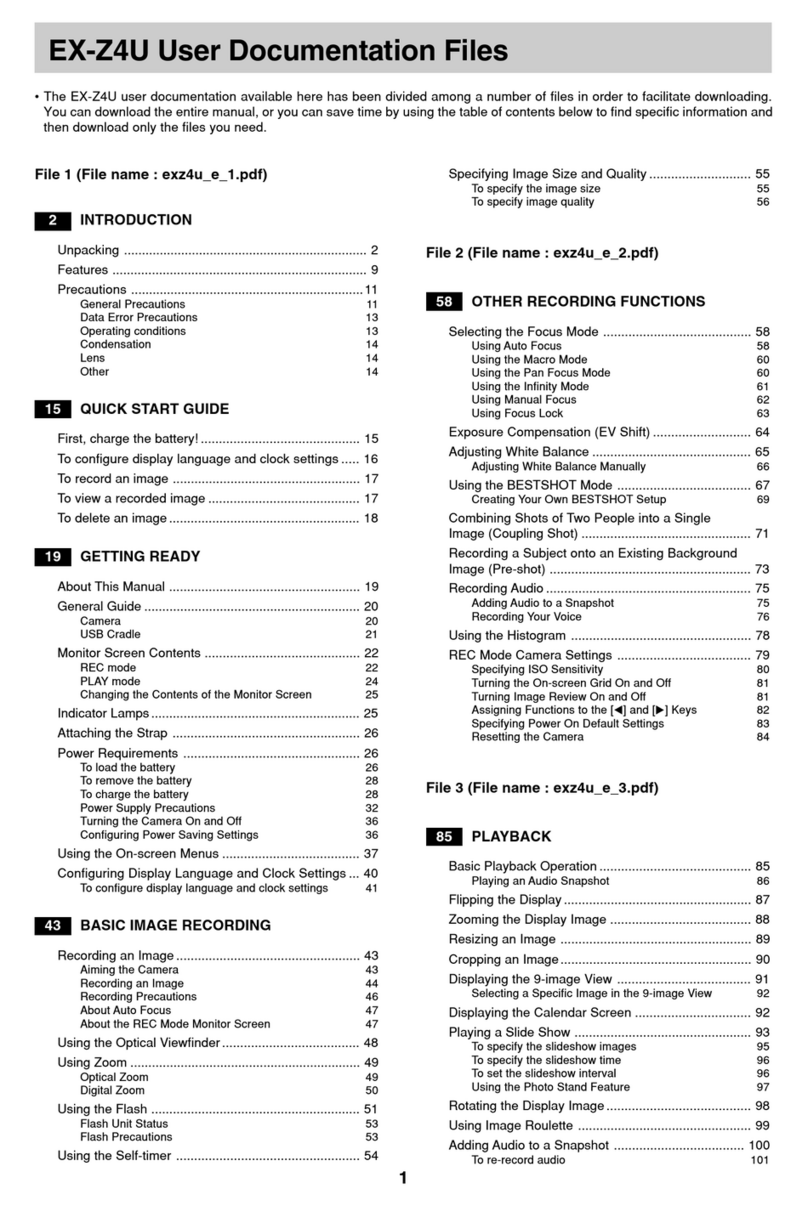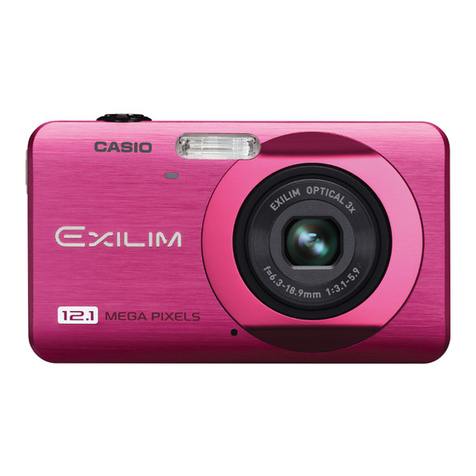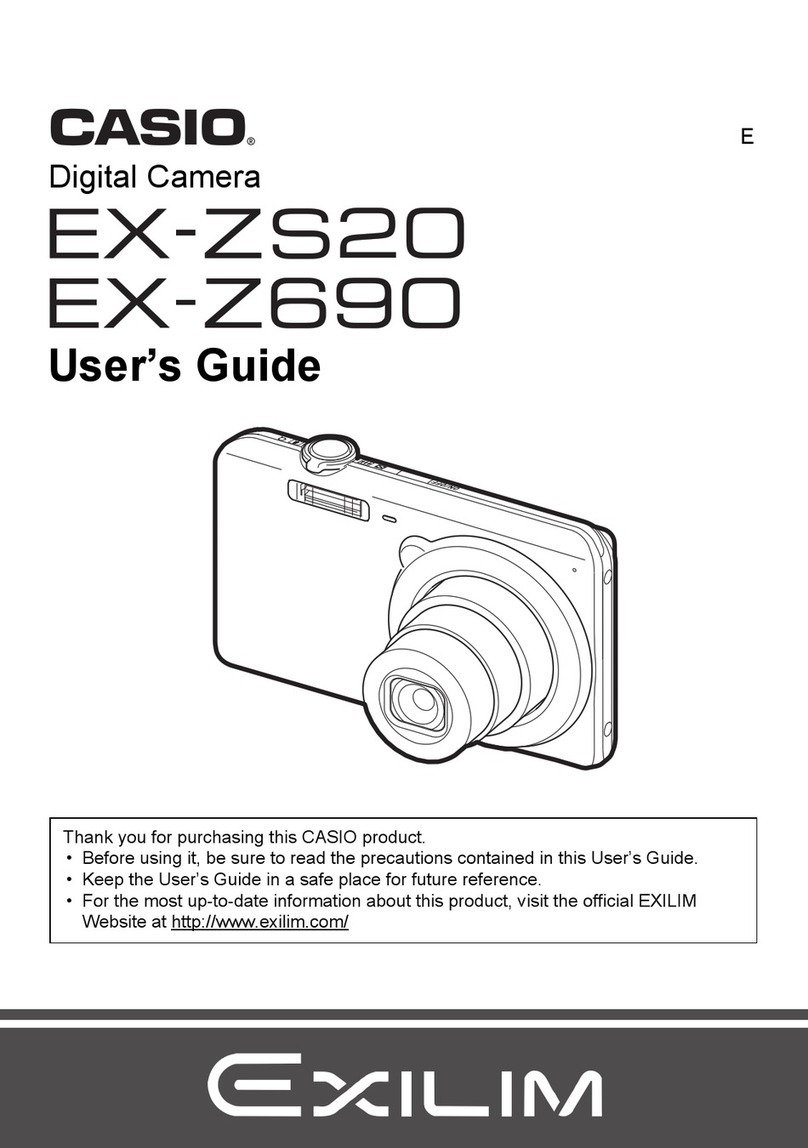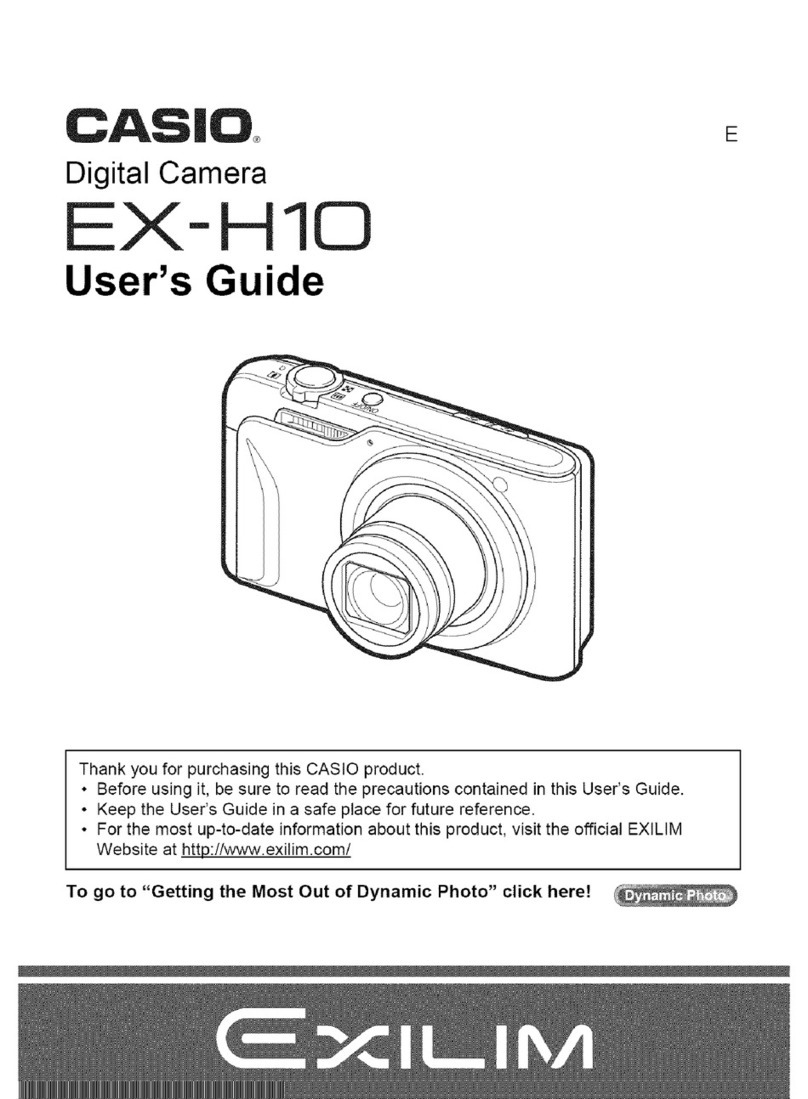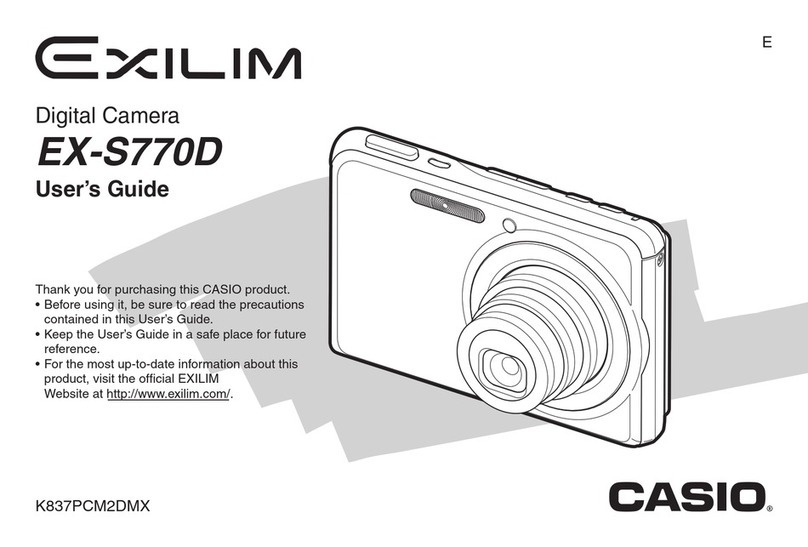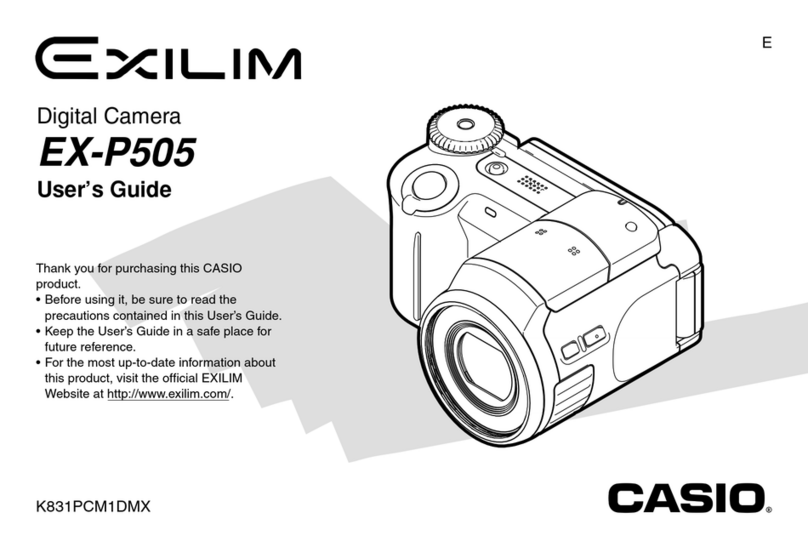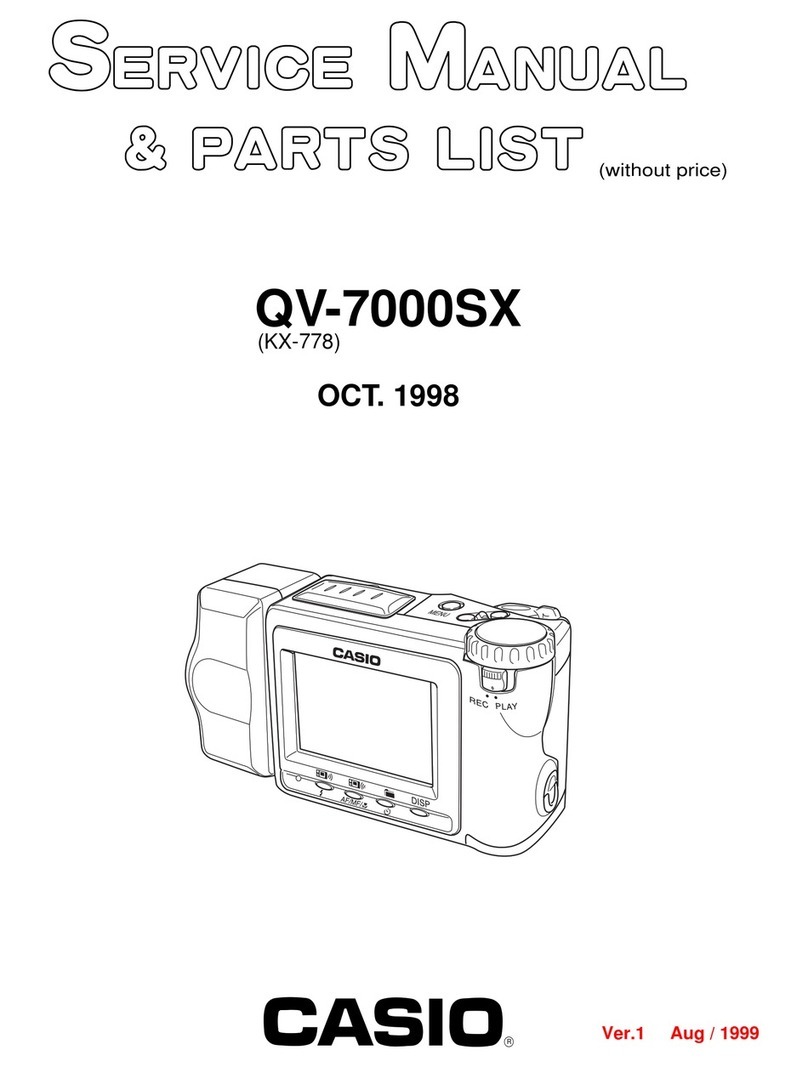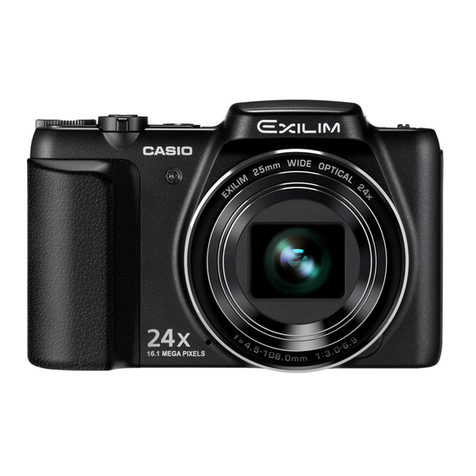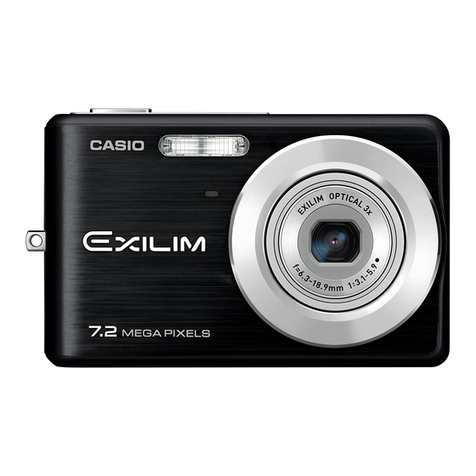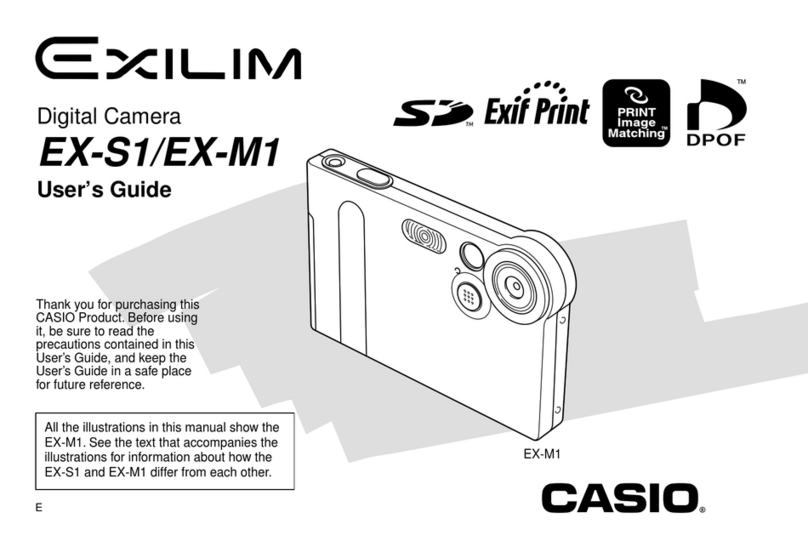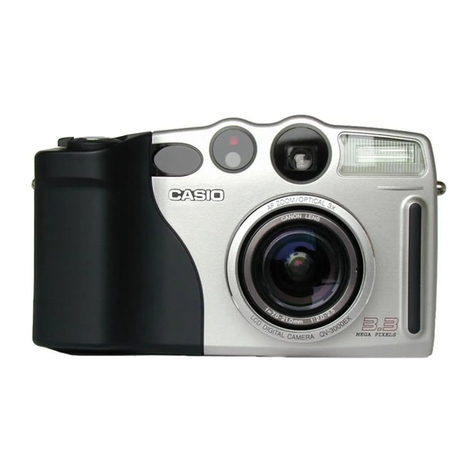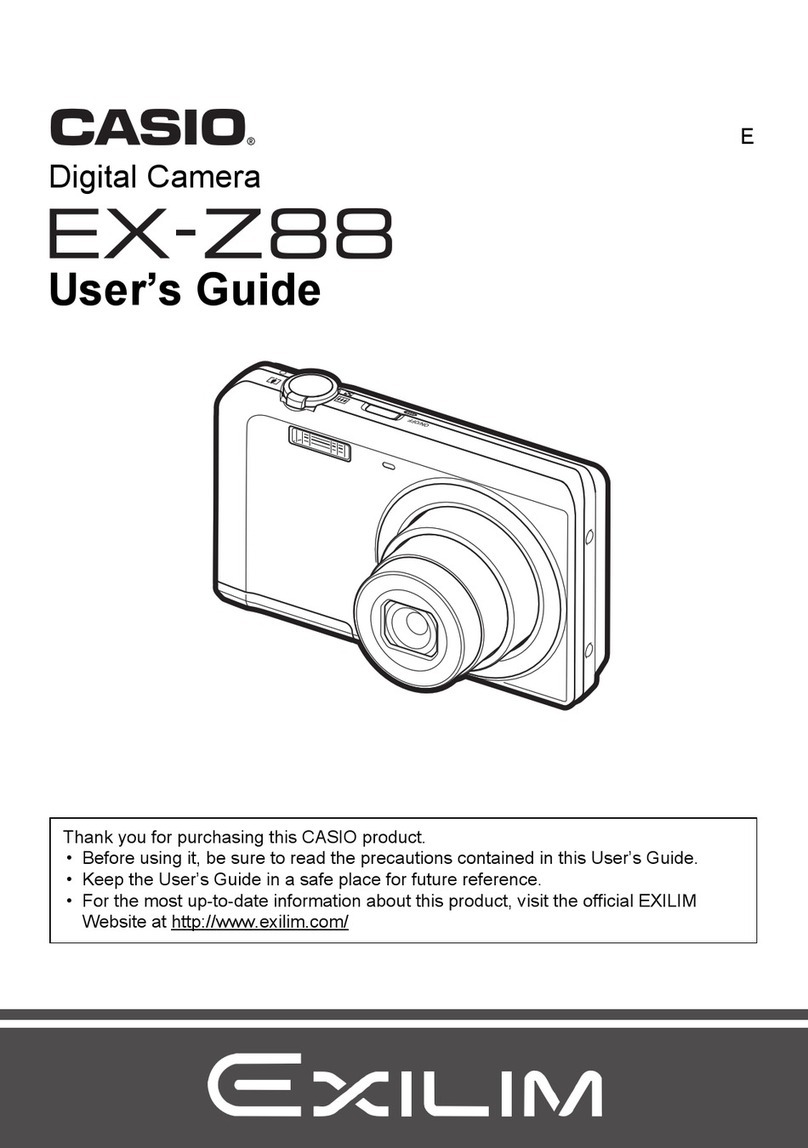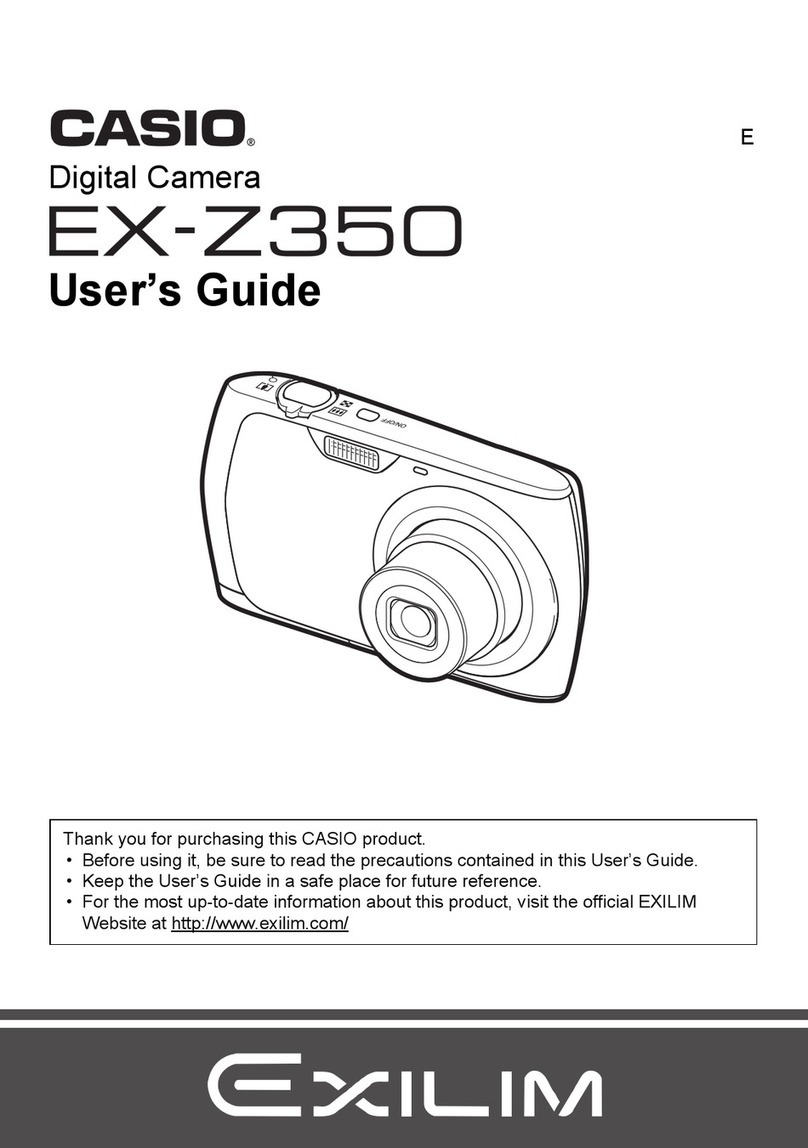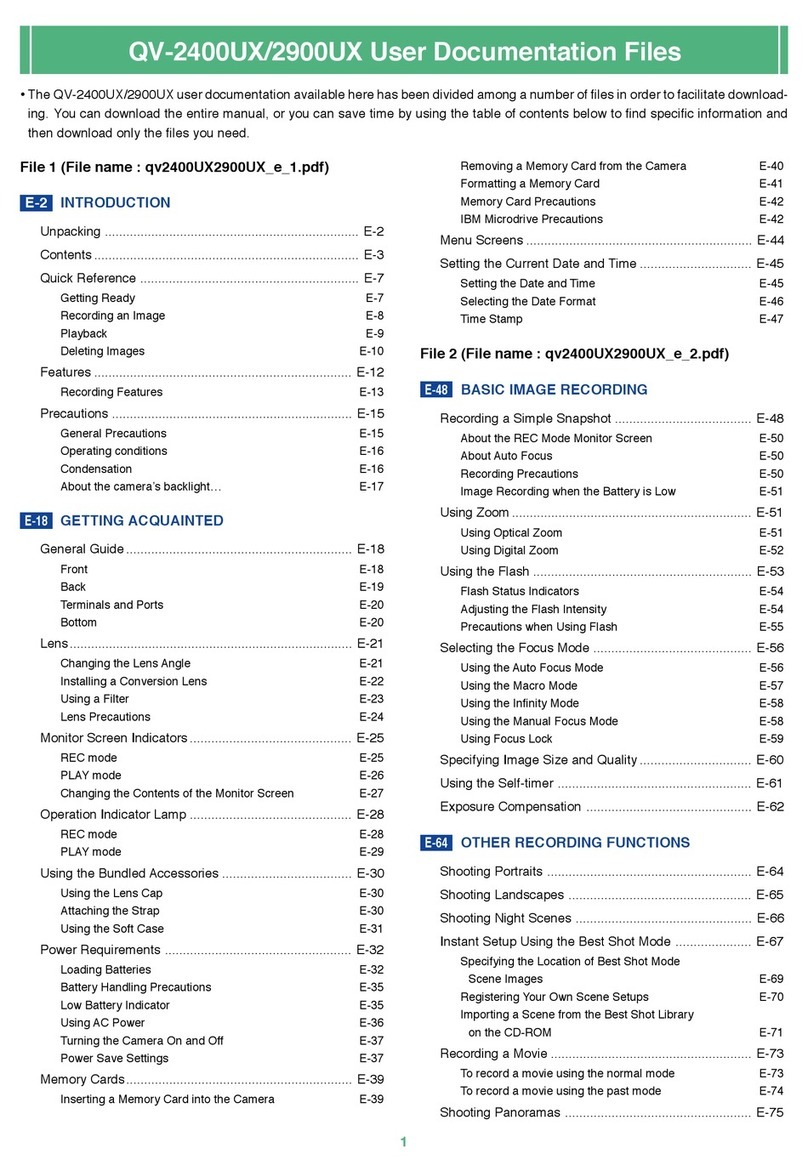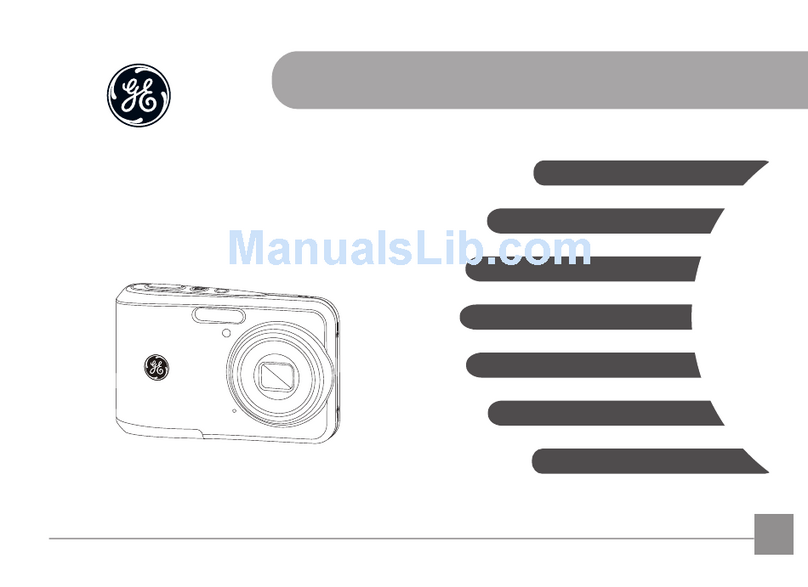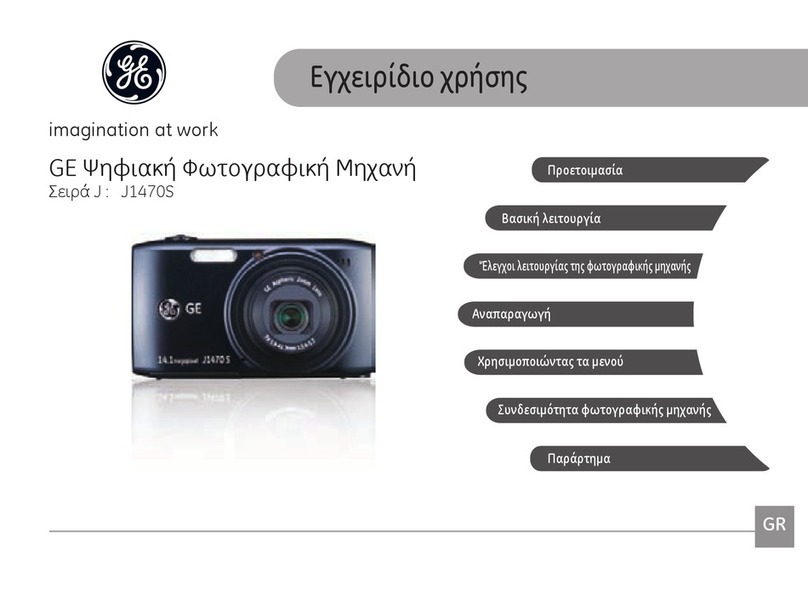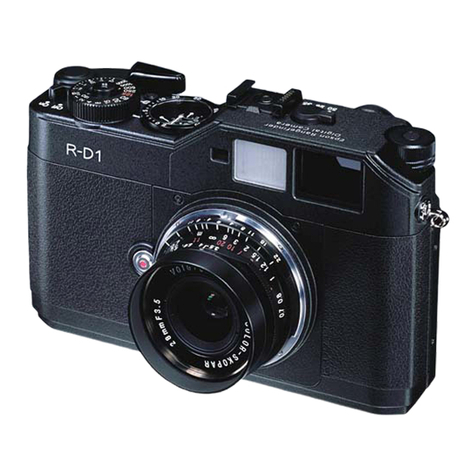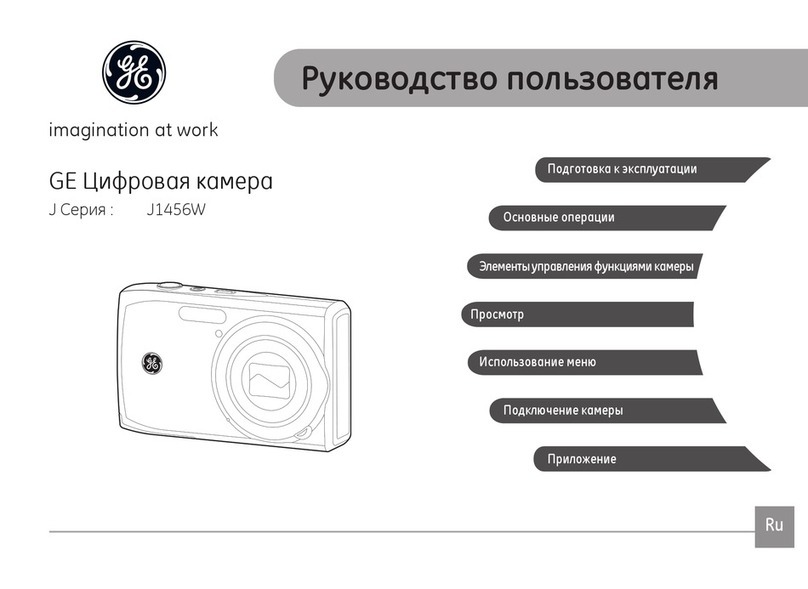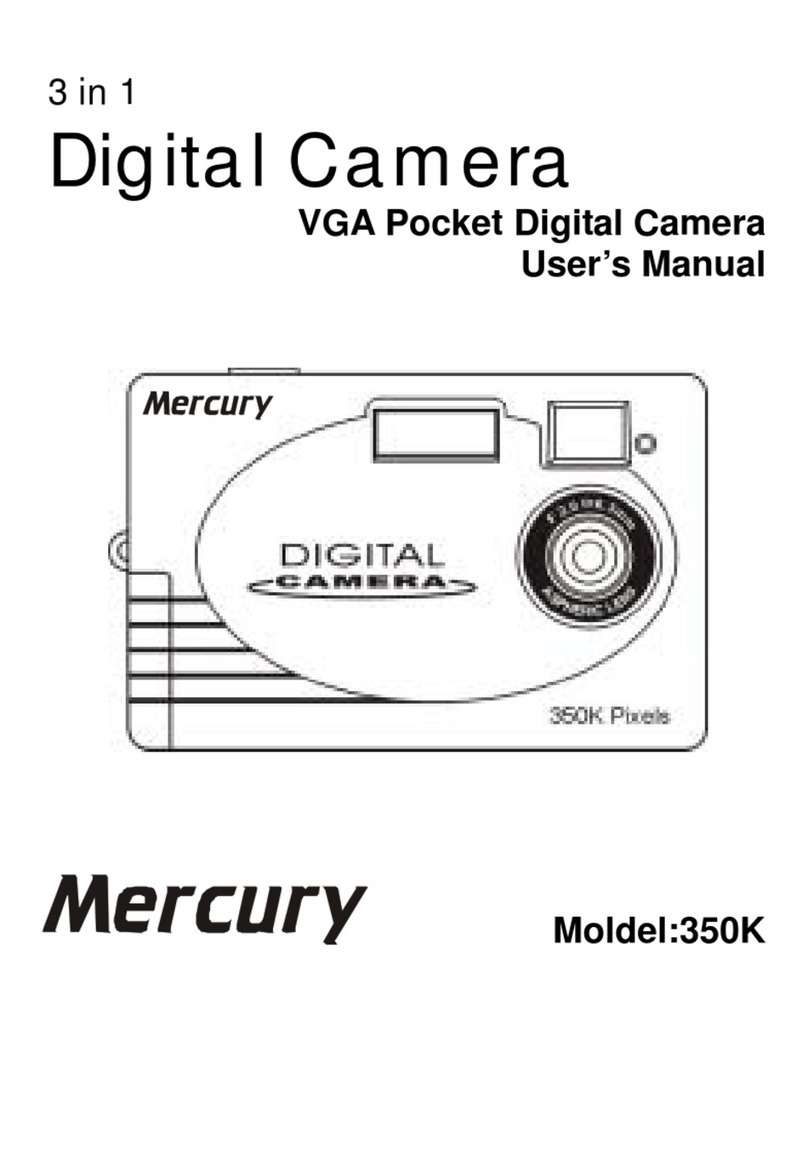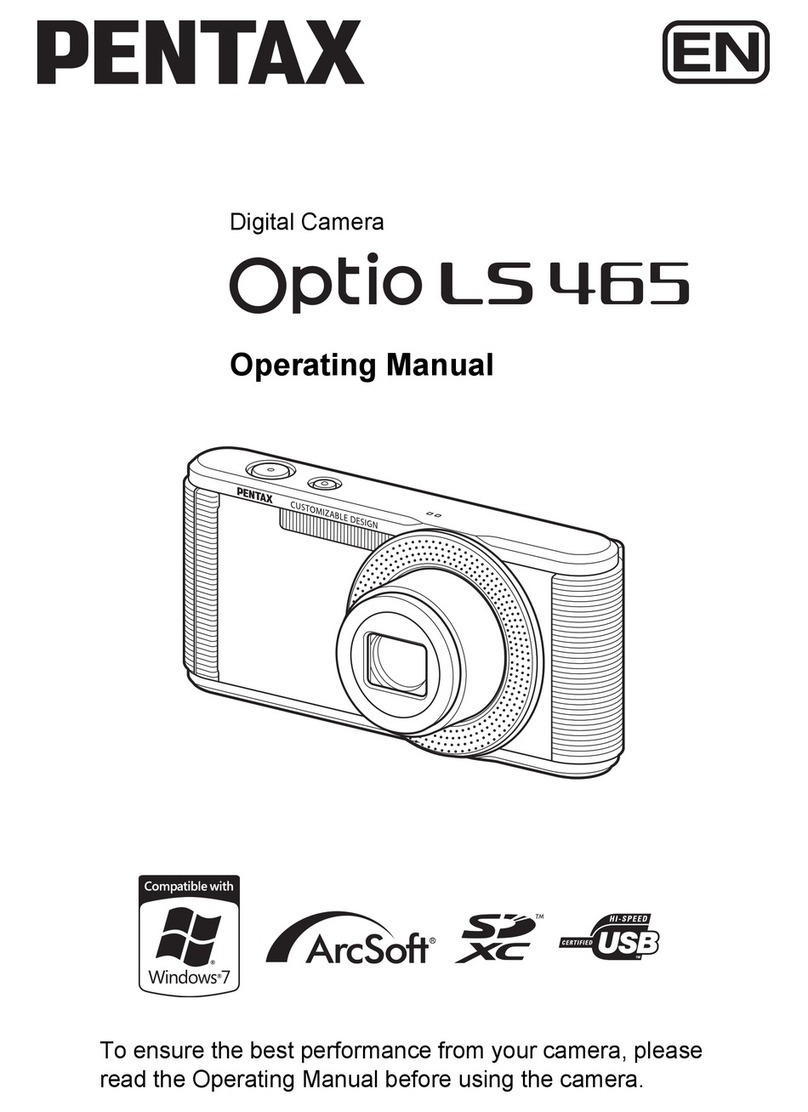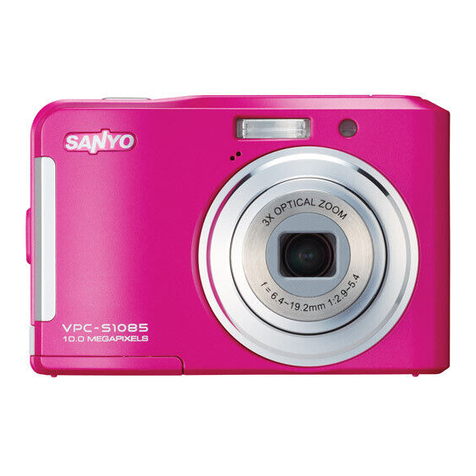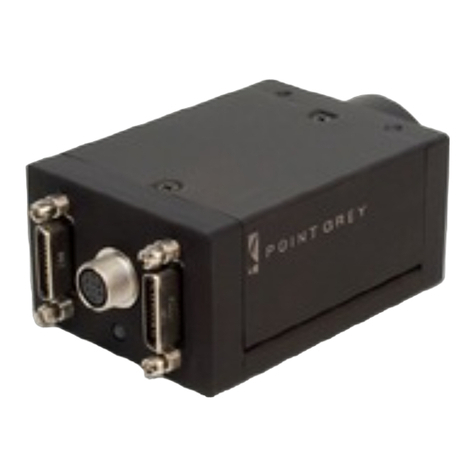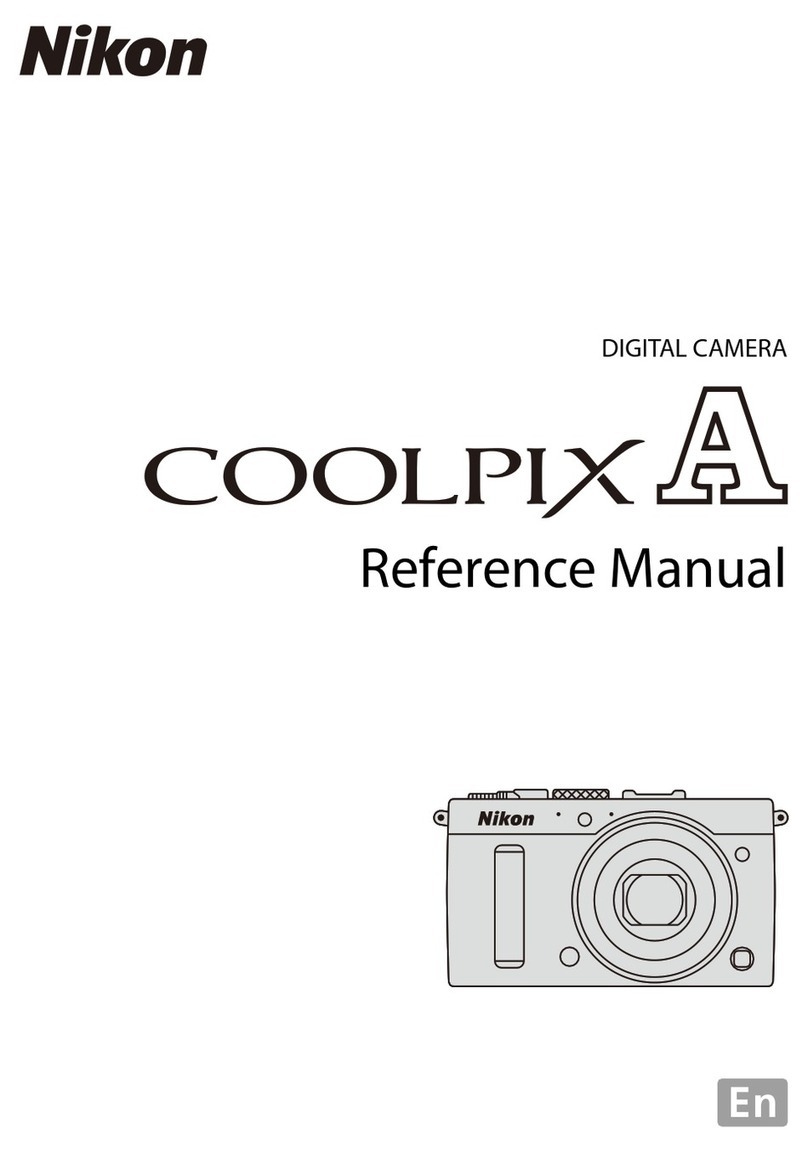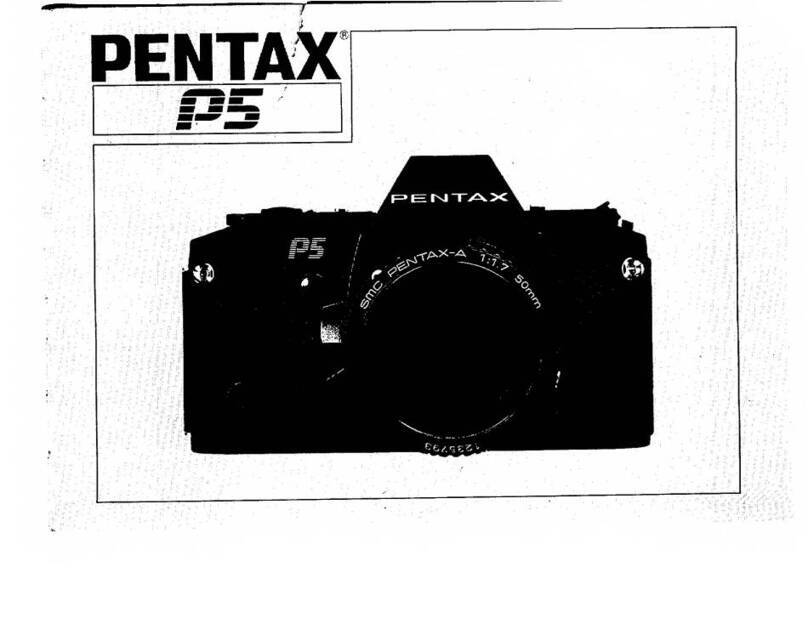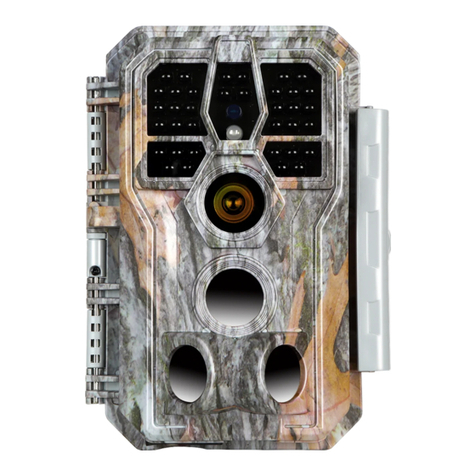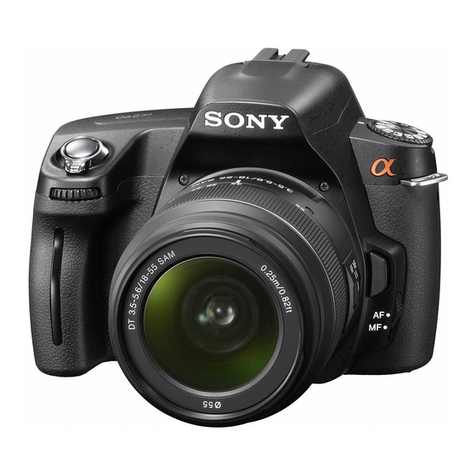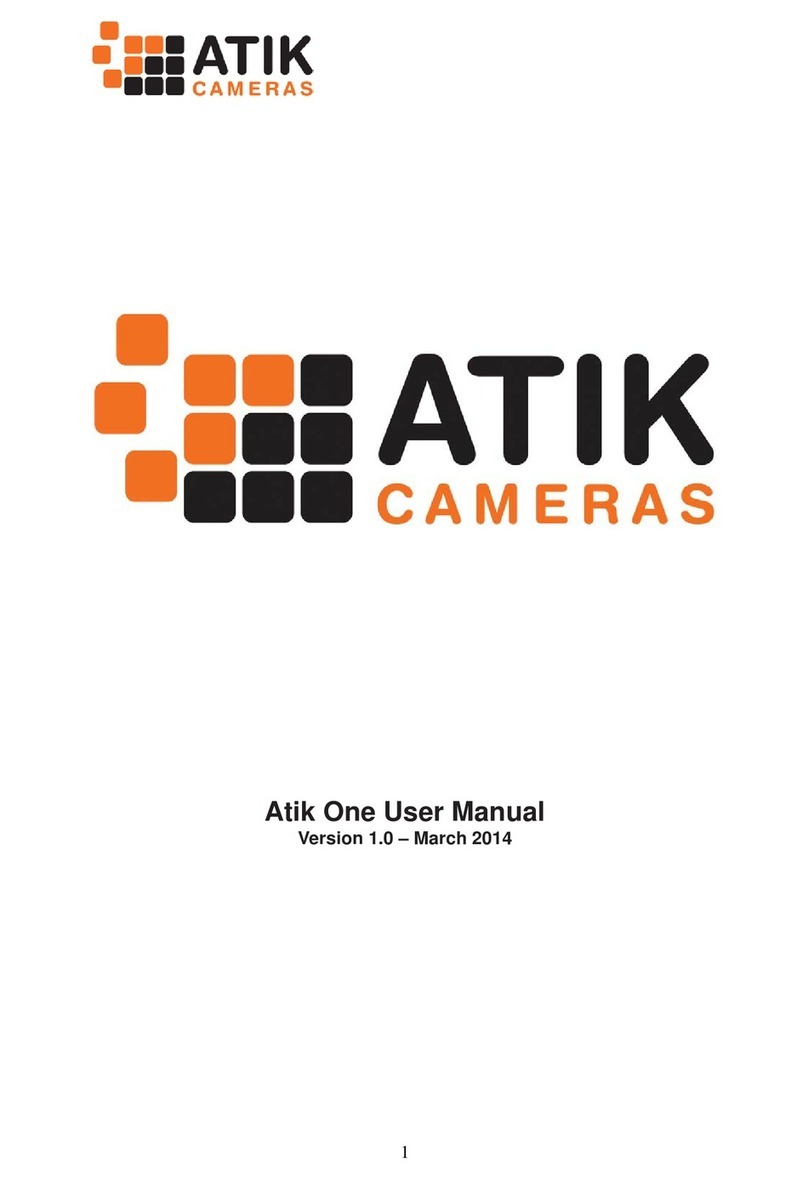CONTENTS
E-3
Setting the Current Date and Time .........................E-43
Setting the Date and Time E-43
Selecting the Date Format E-44
E-45
BASIC IMAGE RECORDING
Using the Full Auto Mode........................................E-45
Recording Precautions E-47
Focusing E-47
About Auto Focus E-48
Image Recording when the Batteries are Low E-48
About the REC Mode Monitor Screen E-49
Using Optical Zoom ................................................E-49
Using the Viewfinder for Recording ........................E-51
Using the Self-timer ................................................E-52
Camera Orientation Detection ................................E-53
E-54
OTHER RECORDING FUNCTIONS
Recording a Single Image (1-Image) .....................E-54
Previewing the Last Image Recorded E-54
Deleting the Last Image Recorded in the REC Mode E-55
Using the Flash .......................................................E-55
Selecting the Flash Mode E-55
Flash Status Indicators E-56
Adjusting the Flash Intensity E-57
Changing the Sync Speed E-57
Selecting a Flash Sync Setting E-58
Precautions when Using Flash E-60
Selecting the Focus Mode ......................................E-61
Using Auto Focus (Multi-area Auto Focus) E-62
Using the Spot Auto Focus Mode E-63
Using the Manual Focus Mode E-64
Using the Infinity Mode E-65
Using the Macro Mode E-65
Using Focus Lock E-66
Expanding the Focus Area E-67
Camera Shake Indicator E-67
Selecting the Metering Mode ..................................E-68
Selecting White Balance .........................................E-69
Adjusting White Balance Manually E-70
Using AE Lock .........................................................E-71
Exposure Compensation.........................................E-72
Using the Histogram ...............................................E-74
Using Digital Zoom..................................................E-75
Instant Setup Using the Best Shot Mode ...............E-76
Copying a Scene from the CD-ROM Best Shot Library E-77
Registering Your Own Best Shot Scenes E-80
Specifying the Location of Best Shot Mode Scenes E-81
Downloaded From camera-usermanual.com
E-5
E-124
MANAGING IMAGES
Folders and Files...................................................E-123
Folders E-123
Files E-124
Protecting Images Against Deletion .....................E-125
Protecting Selected Images E-125
Protecting and Unprotecting All Images
in Selected Folders E-126
Protecting and Unprotecting All Images E-127
DPOF.....................................................................E-127
Making DPOF Settings for Particular Images E-128
Making DPOF Settings for Particular Folders E-129
Making DPOF Settings of All Images
on the Memory Card E-129
PRINT Image Matching.........................................E-130
E-131
OTHER SETTINGS
Changing the Menu Language .............................E-131
Installing a Different Language Set E-131
Turning the Confirmation Beep On and Off ..........E-135
E-136
CONNECTING TO EXTERNAL EQUIPMENT
Connecting to a Television ....................................E-136
Selecting the Video Output Signal Mode E-137
Connecting to a Computer ....................................E-138
Using a Memory Card to Transfer Image Data ....E-140
Memory Card Data E-141
DCF Protocol E-141
Memory Card File Structure E-142
Image Files Supported by the Camera E-143
Precautions when Using a Memory Card
on a Computer E-144
Using the HTML Card Browser .............................E-145
Specifying the Card Browser Type E-145
Viewing Card Browser File Contents E-147
Saving Card Browser Files E-149
E-150
REFERENCE
Camera Menus......................................................E-150
REC mode E-150
PLAY mode E-151
Mode Settings .......................................................E-152
Settings in Each Mode E-152
Drive Mode + Exposure Mode Combinations E-153
Full Auto Mode Settings........................................E-154
Menu Settings E-154
Non-Menu Settings E-154
Troubleshooting.....................................................E-155
Messages E-158
Specifications ........................................................E-160
Downloaded From camera-usermanual.com

